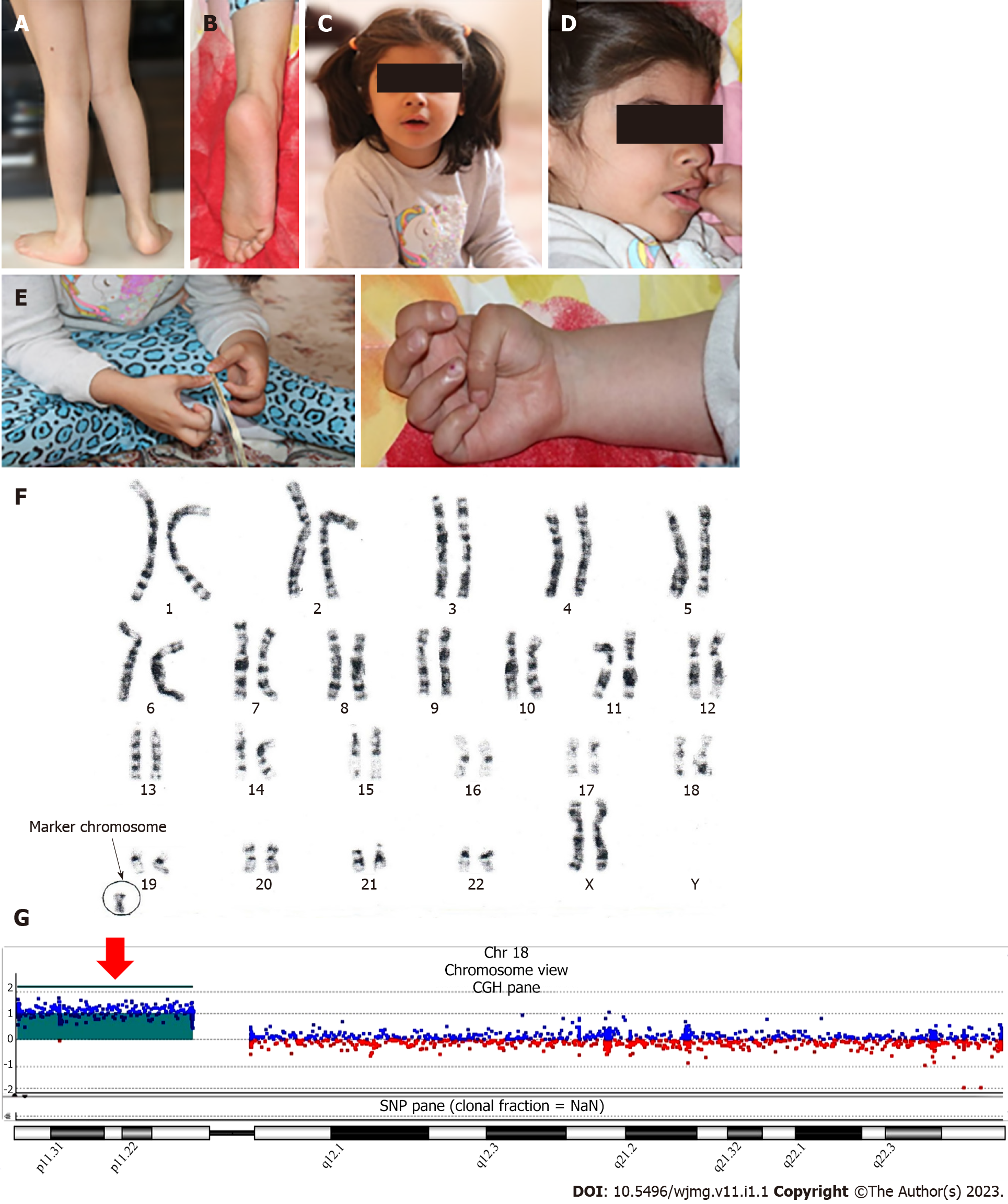Copyright
©The Author(s) 2023.
World J Med Genet. Mar 10, 2023; 11(1): 1-7
Published online Mar 10, 2023. doi: 10.5496/wjmg.v11.i1.1
Published online Mar 10, 2023. doi: 10.5496/wjmg.v11.i1.1
Figure 1 Phenotypic and cytogenetic features of the Iranian girl with tetrasomy 18p syndrome.
A: Valgus deformity (with a valgus angle equal to or greater than 10°); B: Pes planus foot deformity with the loss of the longitudinal arch of the foot where it contacts the ground; C: The evidence of strabismus can still be seen on her face at early childhood, a condition she developed from birth and was treated by surgery at 9-month’s age; D: Mild hirsutism in the face of the girl; E: Clenched hand deformity, with evidence of malformation of the hand and malpositioning of the fingers; F: G-banding chromosome analysis showing the abnormal female karyotype with a small marker chromosome (47,XX, +mar); G: Oligo-Array CGH results, showing a gain of 13.9 Mb pathogenic region on 18p11.32p11.21 from nucleotide 148963 to 14081887, which contains 56 OMIM genes.
- Citation: Esmaeili S, Xian CJ. Phenotypic and cytogenetic features of an Iranian child with tetrasomy 18p syndrome: A case report. World J Med Genet 2023; 11(1): 1-7
- URL: https://www.wjgnet.com/2220-3184/full/v11/i1/1.htm
- DOI: https://dx.doi.org/10.5496/wjmg.v11.i1.1













